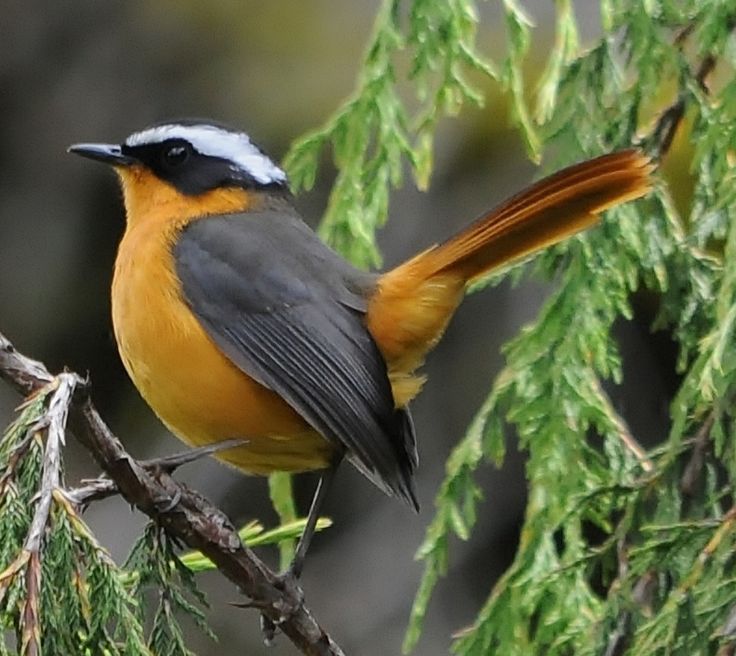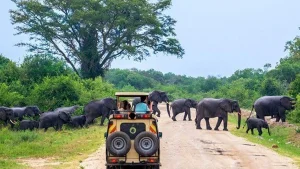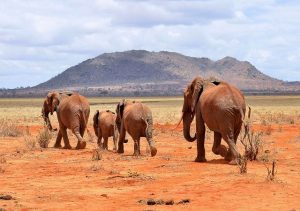Bird Watching Safaris in Kibale Forest

Bird Watching Safaris in Kibale Forest. Kibale Forest National Park, often referred to as the “Primate Capital of the World,” is not only renowned for its chimpanzees but is also an exceptional destination for bird watchers. Situated in western Uganda, the park is a haven for over 370 species of birds, making it a must-visit location for those with an interest in avian life. Whether you’re a seasoned birdwatcher or a casual nature enthusiast, Kibale Forest offers a spectacular variety of birds in a lush, biodiverse environment.
In this guide, we will explore why Kibale Forest is one of the best bird-watching destinations in Uganda, the bird species you can expect to see, and how to make the most of a bird-watching safari in this enchanting park.
Why Kibale Forest is a Birdwatcher’s Paradise
Kibale Forest is located near the Rwenzori Mountains in western Uganda, close to other significant natural attractions such as Queen Elizabeth National Park and Lake Bunyonyi. The park is known for its diverse habitats, including tropical rainforests, marshes, grasslands, and savannahs. These varied ecosystems create an ideal environment for birds, especially those that are elusive or rare, making Kibale one of Uganda’s most prized bird-watching destinations.
Apart from its diversity in flora and fauna, Kibale’s accessibility is another factor that makes it so attractive to bird watchers. The park is relatively easy to reach from major Ugandan towns such as Fort Portal, which is just a short drive away, and it has a range of guided bird-watching tours that cater to various levels of experience. let us take you on this thrilling safari as a bird watching enthusiast.
Bird Species to Look Out for
Kibale Forest is home to over 370 bird species, including both resident and migratory birds. The park offers an exciting opportunity to spot both common species and rare birds that can be found in very few places in the world. Here are some notable bird species you might encounter:
1. African Grey Parrot
One of the most sought-after birds in Kibale Forest is the African Grey Parrot. Known for its intelligence and ability to mimic human speech, this large, grey bird is an exciting sight for bird watchers. These parrots live in the forest canopy and are often spotted in pairs or small groups.
2. Green-breasted Pitta
The Green-breasted Pitta is another bird species that draws bird-watchers to Kibale. Known for its bright green and blue plumage, this bird is usually difficult to spot due to its elusive nature. However, with a keen eye and the help of experienced guides, you may be lucky enough to catch a glimpse of this stunning species.
3. Blue Turaco
The Blue Turaco is a large, colorful bird that is commonly found in Kibale. With its striking blue and green feathers, it’s hard to miss once you’ve spotted it. This bird is often seen in the mid-story of the forest, feeding on fruit, seeds, and leaves.
4. Black-and-white-casqued Hornbill
Hornbills are iconic forest birds, and the Black-and-white-casqued Hornbill is particularly noticeable due to its impressive casque (the helmet-like structure on its beak). This bird is an endemic species to Central Africa and can frequently be seen in the Kibale forest, making it a thrilling discovery for birdwatchers.
5. Grey-winged Robin-Chat
The Grey-winged Robin-Chat is another bird you’ll often spot in Kibale, particularly in the undergrowth of the forest. With its distinctive grey wings and red chest, it’s an attractive bird that is commonly seen hopping around the forest floor.
6. White-cheeked Turaco
Another species of turaco that can be spotted in Kibale is the White-cheeked Turaco, which is especially known for its vibrant green color and unique call. These birds are typically seen in the mid-upper canopy of trees.
7. Red-chested Sunbird
The Red-chested Sunbird is a small but striking bird, recognizable by its metallic red and green plumage. This sunbird is usually found in the forest edge and is frequently seen feeding on nectar from the flowers in Kibale.
8. Brown-crowned Tchagra
This bird, known for its soft, rufous-brown crown and eye-stripe, is a relatively common species in the Kibale area. It tends to be found in dense thickets and grassland edges.
9. African Crowned Eagle
While a rarer sight, the African Crowned Eagle is occasionally spotted in Kibale. This large bird of prey, known for its powerful wingspan, feeds on smaller mammals and birds and can sometimes be seen soaring high above the forest.
10. Collared Sunbird
The Collared Sunbird is a bright, colorful species that is often seen darting among the flowers to feed on nectar. This bird’s vibrant plumage makes it a delightful sight for any birdwatcher.
Best Times to Visit for Bird Watching
The best time for bird watching in Kibale Forest is during the dry season, which typically runs from June to September and December to February. During these months, the weather is conducive for outdoor activities, and the forest is more accessible due to lower rainfall. Bird activity tends to peak during these months as many species are more active and visible.
The rainy season, from March to May and October to November, can also be rewarding for bird watchers, as migratory species are often present during these months. However, rainfall can make trails muddy, and some roads may be less accessible, which can make bird watching more challenging.
Bird Watching Activities in Kibale Forest
1. Guided Bird Watching Tours
To truly make the most of your bird-watching safari, it’s recommended to hire a local guide. Experienced guides are knowledgeable about the birds of Kibale Forest and their behavior, helping you spot species that you might miss on your own. They know the best locations within the park to find specific birds and can provide insights into the ecology of the area.
There are various types of bird-watching tours available:
- Morning Birding Walks: Early mornings are the best time for bird watching when the forest is most active. These tours generally last for 3 to 4 hours, and you can expect to see a range of species.
- Half-Day and Full-Day Tours: For serious birdwatchers, you can opt for a more extended tour that lasts several hours, with breaks for lunch and rest. These tours may involve walking through different habitats in the park, such as the forest, grasslands, and swamp areas.
- Night Birding: While Kibale Forest is known for daytime bird watching, there are also some nocturnal species, including owls and nightjars, that you may encounter on night bird-watching tours.
2. Visit the Bigodi Wetlands Sanctuary
Just outside Kibale Forest, the Bigodi Wetlands Sanctuary is another excellent spot for bird watching. It is home to many of the park’s resident species, including a variety of waterbirds like kingfishers, herons, and egrets. The sanctuary is easily accessible and can be explored on a guided walk. It offers a different perspective of Kibale’s avian life.
3. Combine Bird Watching with Primate Tracking
Kibale is not only a bird-watching paradise but also one of the best places in the world to track chimpanzees. Many visitors combine bird watching with primate tracking, making for an exciting wildlife safari. Early morning birding tours can be followed by chimpanzee trekking in the afternoon, offering a well-rounded experience of Kibale’s diverse wildlife.
Where to Stay for Bird Watching Safaris
Several lodges and accommodations in and around Kibale Forest cater to bird watchers, offering comfortable lodging, access to bird-watching tours, and even dedicated birding guides. Some of the best places to stay for bird watching include:
- Kibale Forest Camp: This camp offers a relaxed, eco-friendly atmosphere and is located near the park’s entrance. It provides easy access to bird-watching walks.
- Primate Lodge Kibale: This mid-range lodge is located within the park and provides a range of bird-watching tours, including walking safaris with guides.
- Kyaninga Lodge: Situated just outside the park, this luxury lodge offers fantastic views over Kyaninga Lake and provides opportunities for bird watching.
Flora and Fauna
The forest is predominantly composed of tropical rainforests, with a mix of tall trees, shrubs, woodlands, and wetlands. Some of the common tree species include mahogany, fig trees, and ironwood, which help form the dense canopy of the forest. The park is incredibly rich in plant life, with over 300 species of trees recorded.
In terms of fauna, Kibale Forest is renowned for its primate populations. Besides chimpanzees, Kibale is home to 13 species of primates, including:
- Lesser red colobus monkey
- Blue monkey
- Grey-cheeked mangabey
- Olive baboon
- Black-and-white colobus
- Red-tailed monkey
- Pottos and Galagos
This diversity makes it one of the best places in Africa for primate viewing. Kibale is also home to several large mammal species like buffalo, elephants, and leopards, although they are more elusive compared to the primates.
Conclusion Bird Watching Safaris in Kibale Forest.
Kibale Forest is an exceptional destination for bird watchers, offering a unique combination of tropical rainforest, swampy wetlands, and varied ecosystems that host a rich variety of bird species. Whether you’re a seasoned birdwatcher or just getting started, the park’s abundant avian life, combined with its scenic beauty and prime wildlife viewing, makes it one of Uganda’s must-visit destinations. With the help of expert guides, visitors can enjoy a rewarding bird-watching experience while also exploring the rich wildlife and primates of this beautiful forest.




